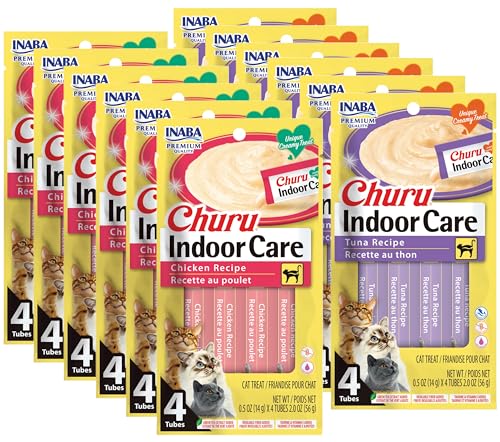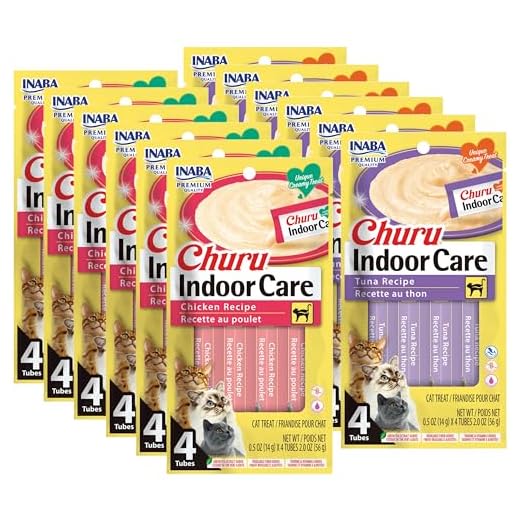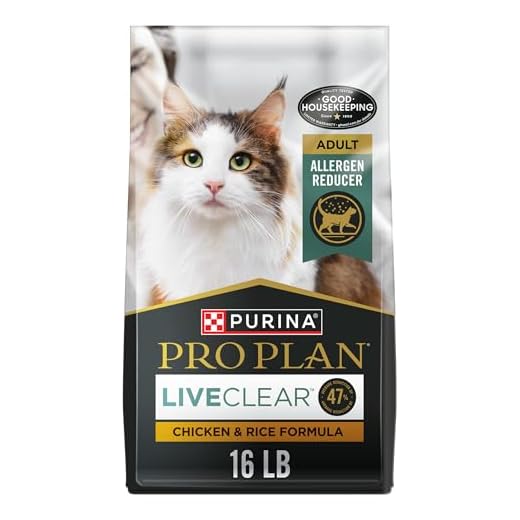



Frequent vomiting can indicate a variety of underlying issues. First, evaluate the type of food provided. Low-quality ingredients or sudden dietary changes may lead to gastrointestinal distress. Always transition between different food brands slowly to avoid shocking the system.
Next, consider the potential for hairballs. Regular grooming sessions help reduce fur ingestion, which can significantly lessen vomiting incidents. If I find myself hacking up hairballs often, it’s essential to increase my fiber intake with specialized food or treats designed to minimize this problem.
Additionally, monitor for signs of stress or anxiety. Changes in environment, new pets, or loud noises can upset a sensitive tummy. Creating a calm space can aid in reducing these episodes. If vomiting persists, it’s wise to consult a veterinarian for a thorough examination. Health issues, such as infections or parasites, might also be the culprits and require immediate attention.
Continuous Vomiting Insights
If my tummy keeps acting up, it might signify several underlying issues. First, food intolerance is a common culprit. Switching to a different brand or type of kibble could help. Pay attention to ingredients; some might not sit well with my sensitive stomach.
Hairballs are another frequent cause. Regular grooming helps reduce fur ingestion. If I’m a frequent groomer, consider a special diet that targets hairball management.
Additionally, swallowing items like string or plastic can lead to serious problems. Keep an eye on my play areas and ensure I don’t have access to anything that could be harmful.
Infections or parasites could also be the reason for my distress. Routine vet check-ups can help catch any issues early. If symptoms persist, immediate veterinary attention is advisable.
Lastly, sudden changes in diet or stress can upset my digestive system. Maintain a stable routine and introduce new foods gradually to avoid any surprises for my tummy.
Common Causes of Vomiting in Cats
Frequent regurgitation can indicate several underlying issues. Hairballs are a common culprit, especially for those with long fur. Regular grooming helps reduce this problem.
Dietary indiscretion might also lead to this situation. Consuming inappropriate foods or eating too quickly can upset the stomach. Slow feeders or portion control can assist in these cases.
Food allergies or intolerances can provoke vomiting. Monitoring reactions to new foods and consulting a veterinarian for dietary changes is wise.
Infections or parasites may also be responsible. Keeping up with vaccinations and deworming schedules is essential for overall health.
Serious medical conditions like kidney disease or hyperthyroidism should not be overlooked. Regular check-ups are crucial for early detection and treatment.
If you’re wondering about specific foods, you might be curious about whether can cats eat fruit snacks. Always research new treats carefully before sharing them.
When to Consult a Veterinarian for Your Feline’s Vomiting
If persistent vomiting occurs more than twice in a short period, seeking veterinary assistance is crucial. Watch for the following signs:
- Presence of blood in vomit.
- Signs of lethargy or decreased activity.
- Loss of appetite over 24 hours.
- Weight loss noticed during a week.
- Diarrhea accompanying the vomiting.
- Vomiting that persists for more than 24 hours.
- Abdominal pain or unusual sensitivity when touched.
It’s wise to provide a detailed history to the veterinarian, including:
- Frequency and appearance of the vomit.
- Dietary changes or new treats introduced.
- Any recent exposure to toxins or plants.
- Behavioral changes noticed during this period.
Early intervention can lead to better outcomes. Don’t hesitate to reach out if any concerning signs emerge. Your health is a priority, and prompt action can make a difference.
Home Care Tips for Managing a Vomiting Feline
If you notice your furry friend regurgitating frequently, try adjusting the feeding routine. Offer smaller, more frequent meals to reduce the chances of an upset stomach. This can help minimize the risk of gulping food too quickly, which often leads to vomiting.
Keep a close eye on hydration. Ensure fresh water is always available, as dehydration can worsen the situation. If your companion isn’t drinking enough, consider adding wet food to the diet or using a pet water fountain to encourage drinking.
Evaluate the food being served. Sometimes, a sudden change in diet can trigger digestive issues. Transition to new foods gradually over several days. Look for high-quality, easily digestible options, and eliminate any ingredients that might be causing allergies or sensitivities.
Maintain a clean environment. Remove hairballs and other potential irritants from your home. Regular grooming can help reduce shedding and hair ingestion, which is a common cause of vomiting.
Monitor stress levels. Changes in the household, new pets, or loud noises can upset even the calmest whiskers. Create a safe, quiet space for your furry buddy to retreat and relax when needed.
If you’re curious about my acting career in the film industry, check out this link: how much did the cat in quiet place make.
Keep a record of any additional symptoms. If there are signs of lethargy, diarrhea, or changes in appetite, it might be time to seek veterinary advice. Quick action can prevent more serious health issues.
Frequent vomiting can indicate a variety of underlying issues. First, evaluate the type of food provided. Low-quality ingredients or sudden dietary changes may lead to gastrointestinal distress. Always transition between different food brands slowly to avoid shocking the system.
Next, consider the potential for hairballs. Regular grooming sessions help reduce fur ingestion, which can significantly lessen vomiting incidents. If I find myself hacking up hairballs often, it’s essential to increase my fiber intake with specialized food or treats designed to minimize this problem.
Additionally, monitor for signs of stress or anxiety. Changes in environment, new pets, or loud noises can upset a sensitive tummy. Creating a calm space can aid in reducing these episodes. If vomiting persists, it’s wise to consult a veterinarian for a thorough examination. Health issues, such as infections or parasites, might also be the culprits and require immediate attention.
Continuous Vomiting Insights
If my tummy keeps acting up, it might signify several underlying issues. First, food intolerance is a common culprit. Switching to a different brand or type of kibble could help. Pay attention to ingredients; some might not sit well with my sensitive stomach.
Hairballs are another frequent cause. Regular grooming helps reduce fur ingestion. If I’m a frequent groomer, consider a special diet that targets hairball management.
Additionally, swallowing items like string or plastic can lead to serious problems. Keep an eye on my play areas and ensure I don’t have access to anything that could be harmful.
Infections or parasites could also be the reason for my distress. Routine vet check-ups can help catch any issues early. If symptoms persist, immediate veterinary attention is advisable.
Lastly, sudden changes in diet or stress can upset my digestive system. Maintain a stable routine and introduce new foods gradually to avoid any surprises for my tummy.
Common Causes of Vomiting in Cats
Frequent regurgitation can indicate several underlying issues. Hairballs are a common culprit, especially for those with long fur. Regular grooming helps reduce this problem.
Dietary indiscretion might also lead to this situation. Consuming inappropriate foods or eating too quickly can upset the stomach. Slow feeders or portion control can assist in these cases.
Food allergies or intolerances can provoke vomiting. Monitoring reactions to new foods and consulting a veterinarian for dietary changes is wise.
Infections or parasites may also be responsible. Keeping up with vaccinations and deworming schedules is essential for overall health.
Serious medical conditions like kidney disease or hyperthyroidism should not be overlooked. Regular check-ups are crucial for early detection and treatment.
If you’re wondering about specific foods, you might be curious about whether can cats eat fruit snacks. Always research new treats carefully before sharing them.
When to Consult a Veterinarian for Your Feline’s Vomiting
If persistent vomiting occurs more than twice in a short period, seeking veterinary assistance is crucial. Watch for the following signs:
- Presence of blood in vomit.
- Signs of lethargy or decreased activity.
- Loss of appetite over 24 hours.
- Weight loss noticed during a week.
- Diarrhea accompanying the vomiting.
- Vomiting that persists for more than 24 hours.
- Abdominal pain or unusual sensitivity when touched.
It’s wise to provide a detailed history to the veterinarian, including:
- Frequency and appearance of the vomit.
- Dietary changes or new treats introduced.
- Any recent exposure to toxins or plants.
- Behavioral changes noticed during this period.
Early intervention can lead to better outcomes. Don’t hesitate to reach out if any concerning signs emerge. Your health is a priority, and prompt action can make a difference.
Home Care Tips for Managing a Vomiting Feline
If you notice your furry friend regurgitating frequently, try adjusting the feeding routine. Offer smaller, more frequent meals to reduce the chances of an upset stomach. This can help minimize the risk of gulping food too quickly, which often leads to vomiting.
Keep a close eye on hydration. Ensure fresh water is always available, as dehydration can worsen the situation. If your companion isn’t drinking enough, consider adding wet food to the diet or using a pet water fountain to encourage drinking.
Evaluate the food being served. Sometimes, a sudden change in diet can trigger digestive issues. Transition to new foods gradually over several days. Look for high-quality, easily digestible options, and eliminate any ingredients that might be causing allergies or sensitivities.
Maintain a clean environment. Remove hairballs and other potential irritants from your home. Regular grooming can help reduce shedding and hair ingestion, which is a common cause of vomiting.
Monitor stress levels. Changes in the household, new pets, or loud noises can upset even the calmest whiskers. Create a safe, quiet space for your furry buddy to retreat and relax when needed.
If you’re curious about my acting career in the film industry, check out this link: how much did the cat in quiet place make.
Keep a record of any additional symptoms. If there are signs of lethargy, diarrhea, or changes in appetite, it might be time to seek veterinary advice. Quick action can prevent more serious health issues.
Frequent vomiting can indicate a variety of underlying issues. First, evaluate the type of food provided. Low-quality ingredients or sudden dietary changes may lead to gastrointestinal distress. Always transition between different food brands slowly to avoid shocking the system.
Next, consider the potential for hairballs. Regular grooming sessions help reduce fur ingestion, which can significantly lessen vomiting incidents. If I find myself hacking up hairballs often, it’s essential to increase my fiber intake with specialized food or treats designed to minimize this problem.
Additionally, monitor for signs of stress or anxiety. Changes in environment, new pets, or loud noises can upset a sensitive tummy. Creating a calm space can aid in reducing these episodes. If vomiting persists, it’s wise to consult a veterinarian for a thorough examination. Health issues, such as infections or parasites, might also be the culprits and require immediate attention.
Continuous Vomiting Insights
If my tummy keeps acting up, it might signify several underlying issues. First, food intolerance is a common culprit. Switching to a different brand or type of kibble could help. Pay attention to ingredients; some might not sit well with my sensitive stomach.
Hairballs are another frequent cause. Regular grooming helps reduce fur ingestion. If I’m a frequent groomer, consider a special diet that targets hairball management.
Additionally, swallowing items like string or plastic can lead to serious problems. Keep an eye on my play areas and ensure I don’t have access to anything that could be harmful.
Infections or parasites could also be the reason for my distress. Routine vet check-ups can help catch any issues early. If symptoms persist, immediate veterinary attention is advisable.
Lastly, sudden changes in diet or stress can upset my digestive system. Maintain a stable routine and introduce new foods gradually to avoid any surprises for my tummy.
Common Causes of Vomiting in Cats
Frequent regurgitation can indicate several underlying issues. Hairballs are a common culprit, especially for those with long fur. Regular grooming helps reduce this problem.
Dietary indiscretion might also lead to this situation. Consuming inappropriate foods or eating too quickly can upset the stomach. Slow feeders or portion control can assist in these cases.
Food allergies or intolerances can provoke vomiting. Monitoring reactions to new foods and consulting a veterinarian for dietary changes is wise.
Infections or parasites may also be responsible. Keeping up with vaccinations and deworming schedules is essential for overall health.
Serious medical conditions like kidney disease or hyperthyroidism should not be overlooked. Regular check-ups are crucial for early detection and treatment.
If you’re wondering about specific foods, you might be curious about whether can cats eat fruit snacks. Always research new treats carefully before sharing them.
When to Consult a Veterinarian for Your Feline’s Vomiting
If persistent vomiting occurs more than twice in a short period, seeking veterinary assistance is crucial. Watch for the following signs:
- Presence of blood in vomit.
- Signs of lethargy or decreased activity.
- Loss of appetite over 24 hours.
- Weight loss noticed during a week.
- Diarrhea accompanying the vomiting.
- Vomiting that persists for more than 24 hours.
- Abdominal pain or unusual sensitivity when touched.
It’s wise to provide a detailed history to the veterinarian, including:
- Frequency and appearance of the vomit.
- Dietary changes or new treats introduced.
- Any recent exposure to toxins or plants.
- Behavioral changes noticed during this period.
Early intervention can lead to better outcomes. Don’t hesitate to reach out if any concerning signs emerge. Your health is a priority, and prompt action can make a difference.
Home Care Tips for Managing a Vomiting Feline
If you notice your furry friend regurgitating frequently, try adjusting the feeding routine. Offer smaller, more frequent meals to reduce the chances of an upset stomach. This can help minimize the risk of gulping food too quickly, which often leads to vomiting.
Keep a close eye on hydration. Ensure fresh water is always available, as dehydration can worsen the situation. If your companion isn’t drinking enough, consider adding wet food to the diet or using a pet water fountain to encourage drinking.
Evaluate the food being served. Sometimes, a sudden change in diet can trigger digestive issues. Transition to new foods gradually over several days. Look for high-quality, easily digestible options, and eliminate any ingredients that might be causing allergies or sensitivities.
Maintain a clean environment. Remove hairballs and other potential irritants from your home. Regular grooming can help reduce shedding and hair ingestion, which is a common cause of vomiting.
Monitor stress levels. Changes in the household, new pets, or loud noises can upset even the calmest whiskers. Create a safe, quiet space for your furry buddy to retreat and relax when needed.
If you’re curious about my acting career in the film industry, check out this link: how much did the cat in quiet place make.
Keep a record of any additional symptoms. If there are signs of lethargy, diarrhea, or changes in appetite, it might be time to seek veterinary advice. Quick action can prevent more serious health issues.











